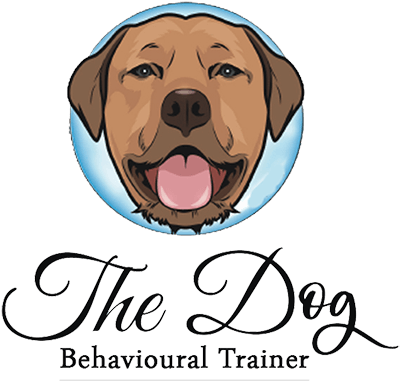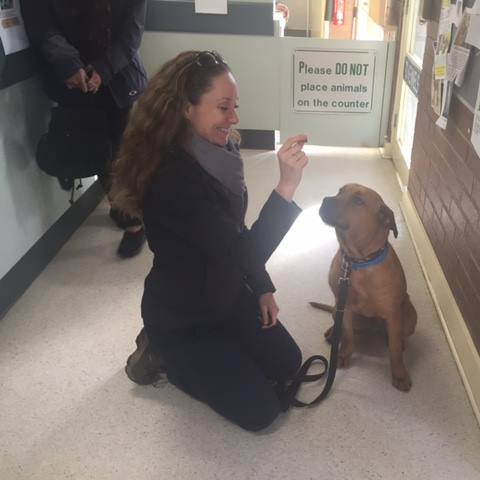Dogs can’t communicate through speech, nor do they understand human language, they use their own form of sign language.
Understanding each dogs language and communication will help them learn to trust you and become more trusting of people.
As humans we seem to have this opinion that we have the right to touch someone else’s dog and the dog should accept this. I don’t agree. I am not permitted to walk up and hug or pat a stranger’s child. I know, some of you might say “Oh but it’s different”, but is it really?
Dogs, like human’s, have feelings and just like us, they respond to those feeling. When a dog has experienced trauma from the hands of a human, they remember each movement that caused the pain.
So each time they meet a new person that moves in a way that triggers a memory of fear, they will respond to that fear by barking, lunging, growling which can even then lead into biting.
This is irrespective of you being a nice person or if you have had dogs all your life; it does not make any difference to a fearful dog. All dogs are different.
What does make a difference are your actions. When you don’t know the dog or it’s history, it is important that you consider their feelings before your needs and we learn how to read a dog’s body language before choosing to pat them.
This is a subject close to my heart as this affects my boy Archie.
Dogs, just like my Archie may have negative associations to hands moving toward them.
Here is a bit of background

My gorgeous boy Archie is my Blacktown pound special. We adopted him a year and a half ago when he was approximately 10 months old. No history other than he came in to the pound with another dog and he had been there for 6 weeks.
He sat at the back of the kennel very quietly, surrounded by the loud barking of the other stressed dogs. He just gave me a look that meant I knew he was the one.
The first human he encountered outside of the kennels was a male stranger, who went to pat him. Archie reacted by barking and lunging which was a behaviour I had not seen in the kennels.
In my experience you rarely see all true behaviours in those types of environments due to shutdown or learned helplessness, which is caused by excessive stress.
When I saw this behaviour I knew I had a human reactive dog so I did a few more tests to see how reactive to human movement he was. The way I assessed this was by moving my hand slowly toward him and watching for changes in his body language.
When I moved my hand toward him he backed away instantly, that was enough information for me to know what NOT to do
Any hand movement toward him and he displayed many stress signals such as wide eyes, head turn, lip lick, barking and cowering. We then learned to read these communications and listen to them.
We combined this with Classical Conditioning which is a method of training that aims to build associations of any movements as a positive rather than a negative. So I would open my hand a small distance away from him and then deliver treats and repeat.
For a long time we did not pat him unless we were invited and over time this allowed him to build trust with us. After a patient year and a half, Archie is much improved and much more confident.
He has a circle of humans that he trusts that can pat, rub and pick him up, and one special ‘Aunty’ who can hug him.
The other problem we encountered was Vet visits. When dog’s go to the Vet it’s generally not for rubs and snacks, it is generally for something that elicits pain so for a human reactive dog this can pose a problem.
After multiple visits to a few Vets, we finally found an amazing Vet that understood his difficulties. Over a period of many visits Archie and I would drop into the Vet where he was showered with treats. Gradually we increased the time.
At home I conditioned him to present and accept pressure on his arm. After many months of training he has now allowed her to take blood and do a full exam without any reaction at all.
All of these people Archie grew to trust by them NOT just walking up and patting him, but by reading and understanding his communications.
But for those that don’t observe him I find myself saying, “Please don’t pat my dog”, to which most people ignore, try to pat him and he then reacts by barking.
What people don’t realise is they are actually teaching Archie that barking is the best way to stop them from touching him. This throws out all the work I am doing with him.
So please, ask if you can pat someone else’s dog.
Many wonderful parents are now teaching their children to ask before patting a stranger’s dog and we should be the same as adults. If you are going to approach a stranger’s dog please look at their body language.
If you see them turn their head, lick their lips, raise a paw, yawn, drop their head, move away, freeze or you can see the whites of their eyes, then they are asking you nicely to NOT approach.
Please help teach a fearful dog that humans aren’t all scary.

